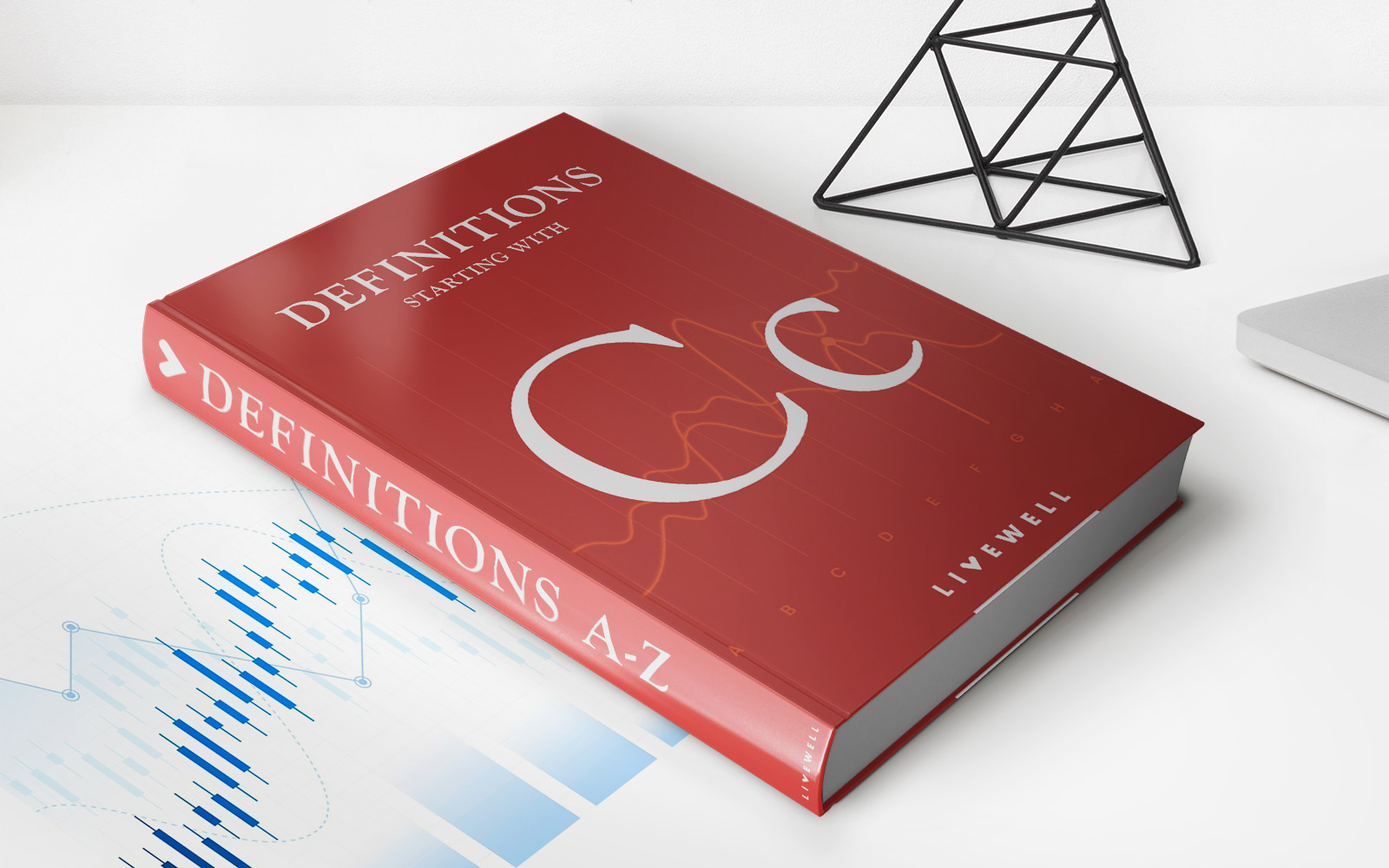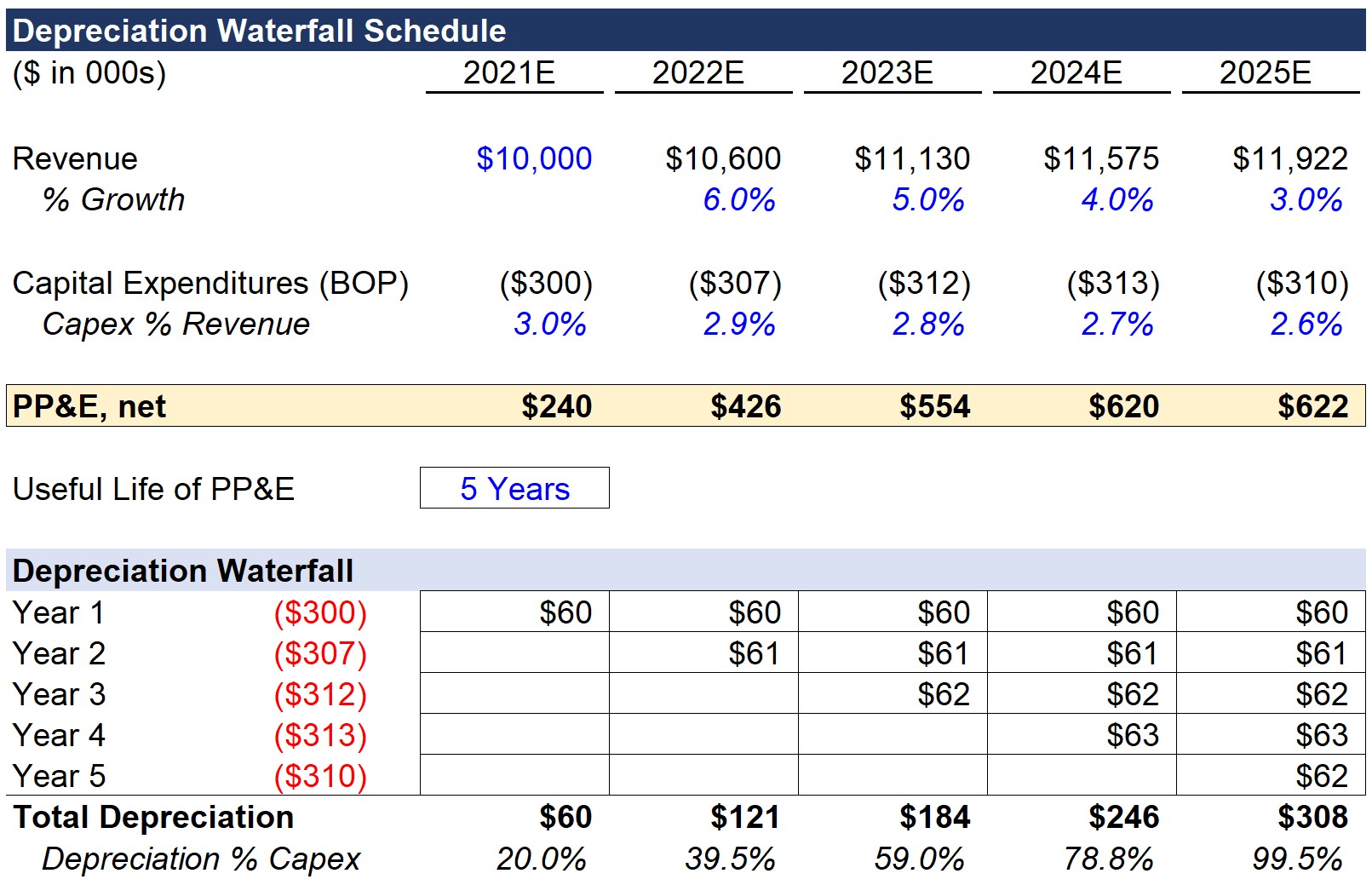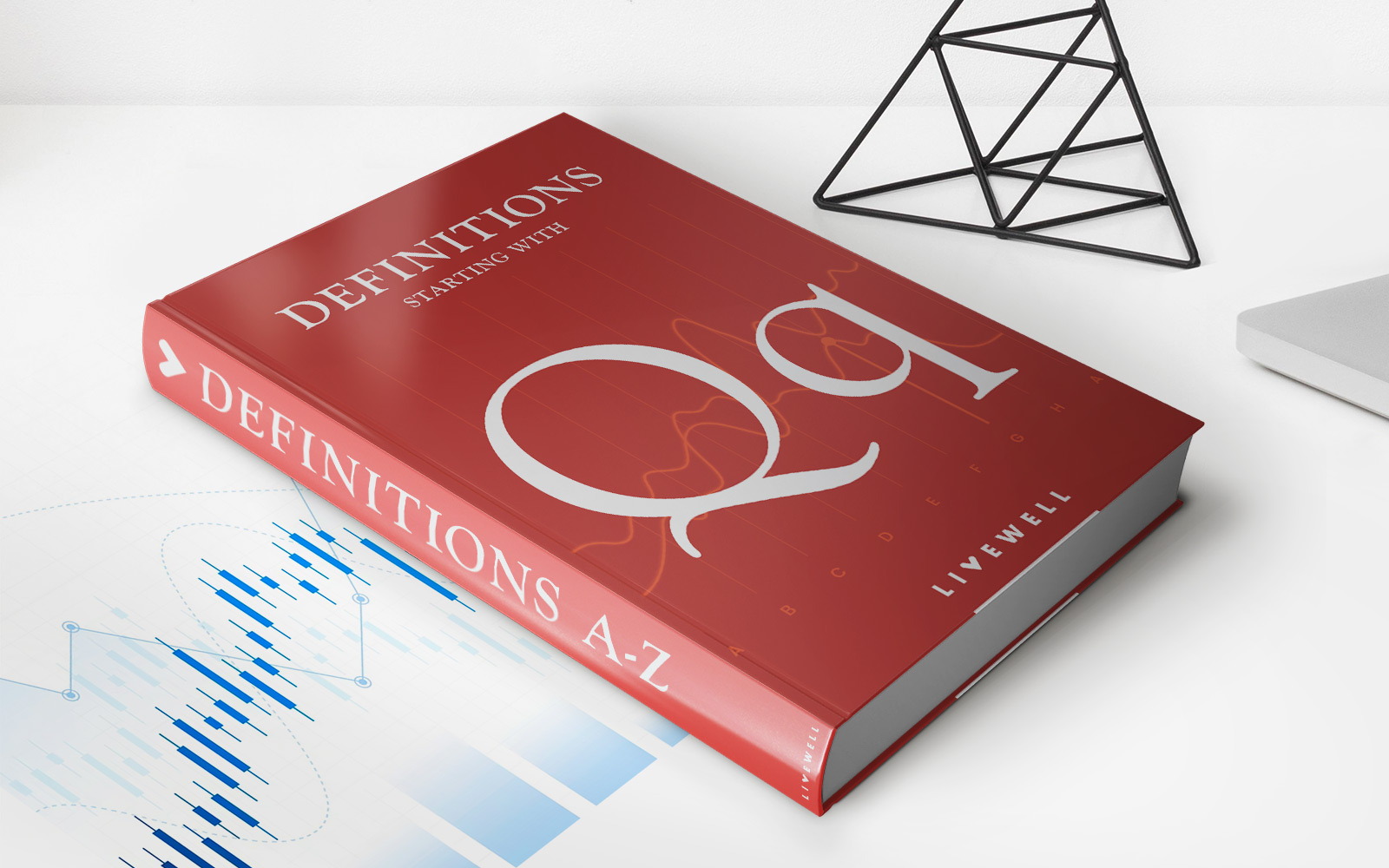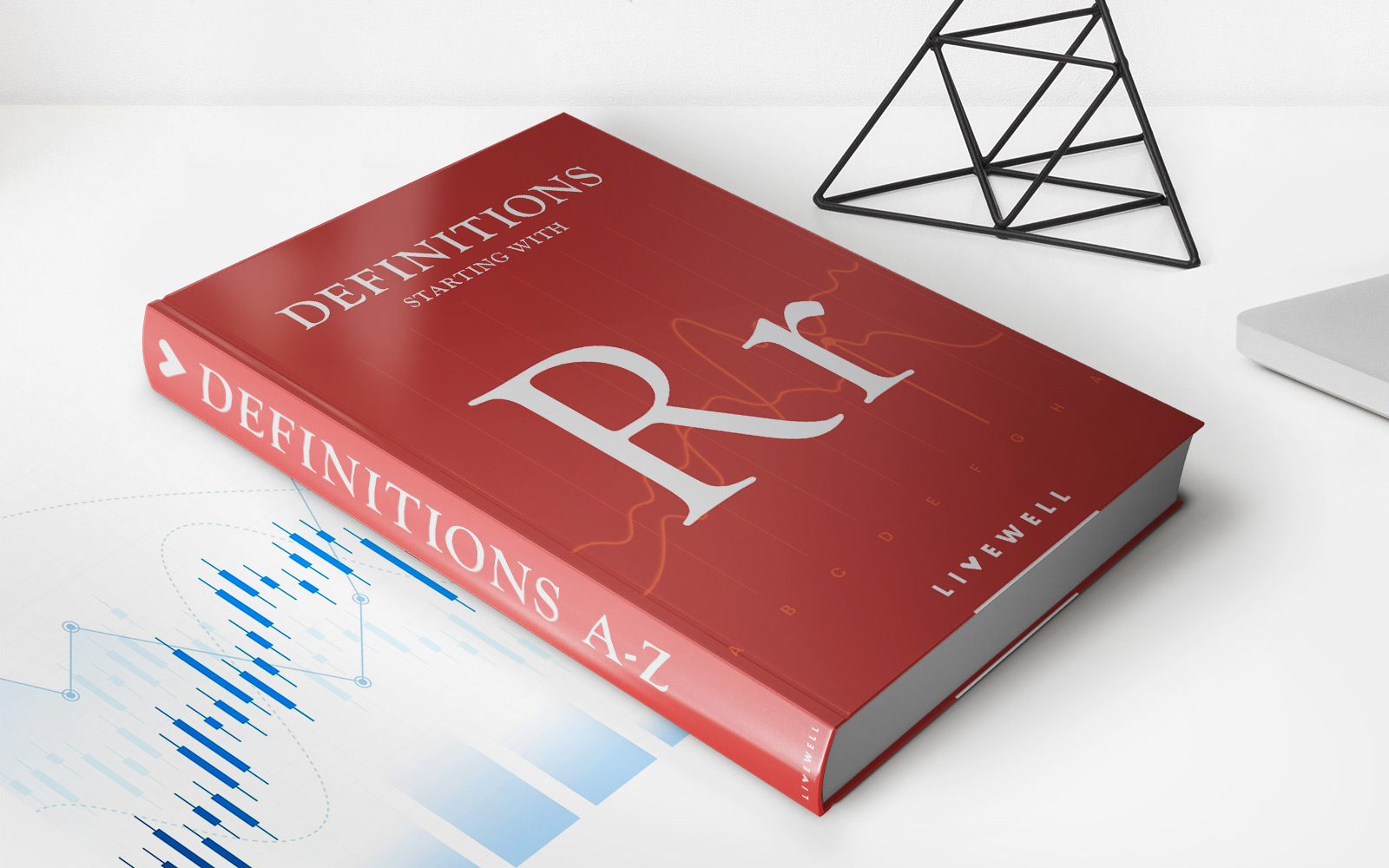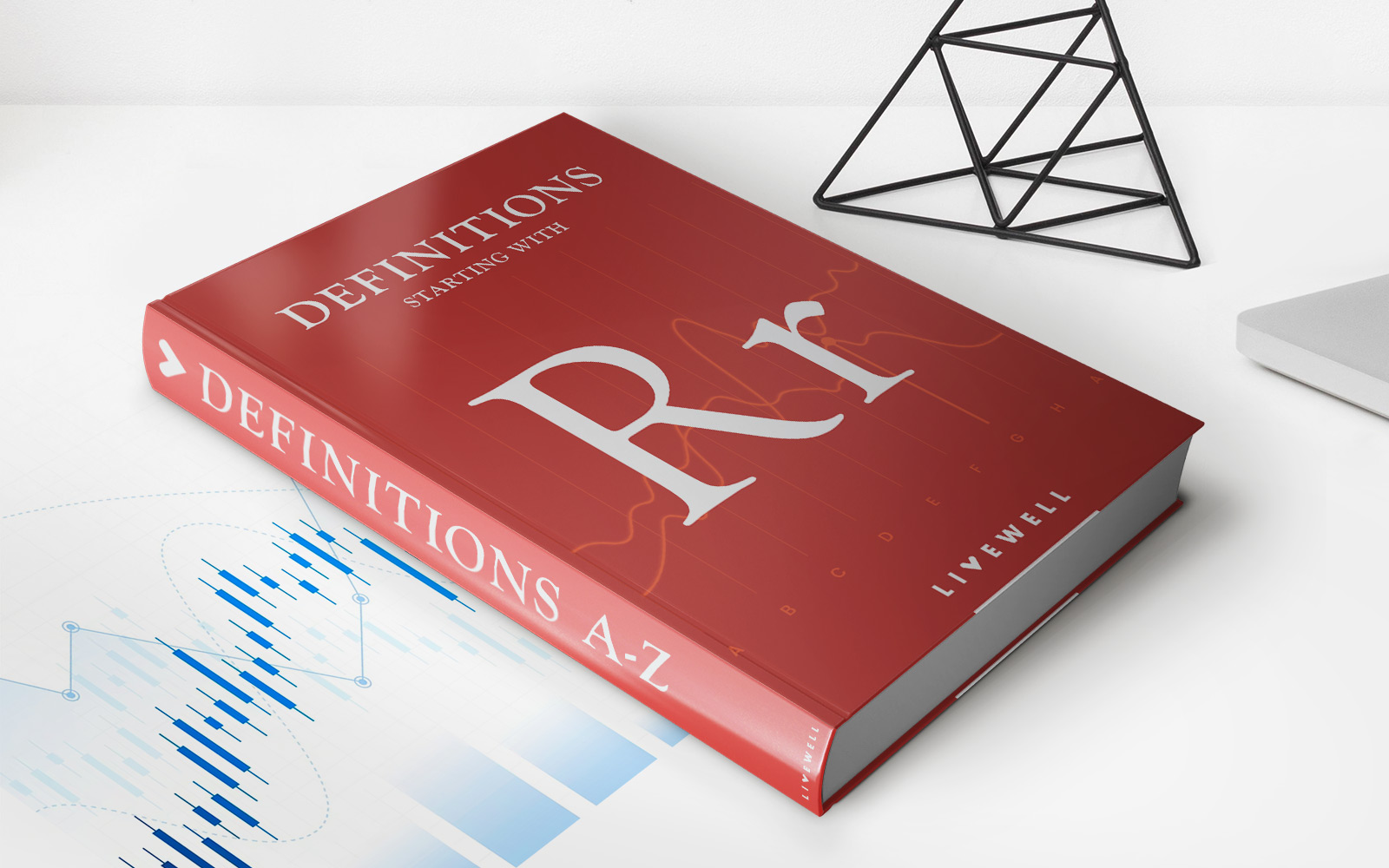

Finance
What Is A Beneficiary For 401K
Modified: February 21, 2024
Find out what a beneficiary is for a 401K and how it impacts your finance. Gain insights into the importance of choosing the right beneficiary to secure your retirement savings.
(Many of the links in this article redirect to a specific reviewed product. Your purchase of these products through affiliate links helps to generate commission for LiveWell, at no extra cost. Learn more)
Table of Contents
- Introduction
- Understanding the Basics
- Definition of a Beneficiary
- Importance of Designating a Beneficiary
- Eligible Beneficiaries for a 401(k)
- Primary Beneficiary vs. Contingent Beneficiary
- Naming a Beneficiary for your 401(k)
- Changing or Updating Beneficiary Designations
- Potential Consequences of Failing to Designate a Beneficiary
- Spousal Rights and Consent Requirements
- Beneficiary Options and Distribution Rules
- Tax Implications for Beneficiaries
- Conclusion
Introduction
When it comes to planning for retirement, a 401(k) is one of the most popular and powerful investment vehicles available. As you contribute to your 401(k) over the years, it’s important to consider what will happen to those funds in the event of your death. This is where having a designated beneficiary becomes crucial.
A beneficiary is an individual or entity that you select to receive the assets of your 401(k) plan upon your passing. Choosing the right beneficiary is essential to ensure that your hard-earned savings are distributed according to your wishes and to provide financial security for your loved ones.
In this article, we will dive into the details of what a beneficiary is, why it is important to designate one for your 401(k), and the various options and considerations involved in the process. By understanding the ins and outs of this critical aspect of retirement planning, you can make informed decisions that align with your goals and provide peace of mind.
Whether you’re just starting your career or are already well into your retirement planning journey, understanding the role of a beneficiary in your 401(k) is essential. So, let’s get started by exploring the definition of a beneficiary.
Understanding the Basics
Before we delve into the specifics of designating a beneficiary for your 401(k), let’s start by understanding the basics of what a beneficiary is and why it matters.
In simple terms, a beneficiary is a person or entity that is entitled to receive the assets of your 401(k) plan upon your death. This designation is crucial because it determines who will inherit your retirement savings and how they will receive those funds.
Designating a beneficiary ensures that your assets pass directly to the intended recipient, bypassing the probate process. Probate is the legal process through which a deceased person’s assets are distributed and can be time-consuming, costly, and subject to court supervision.
By having a designated beneficiary, you provide a clear directive to your plan administrator on how your 401(k) assets should be handled upon your passing. This simplifies the distribution process and reduces stress and confusion for your loved ones during an already challenging time.
It’s also important to note that if you fail to designate a beneficiary for your 401(k), the plan’s default rules will determine who receives your assets. These default rules can vary depending on the plan’s terms, but typically prioritize surviving spouses, followed by children, parents, or other family members.
Now that we have a solid understanding of the basics, let’s move on to the specific definition and significance of a beneficiary in the context of a 401(k) plan.
Definition of a Beneficiary
In the realm of retirement planning, a beneficiary refers to an individual or entity that is designated to receive the assets of your 401(k) plan upon your death.
When you establish a 401(k) account, you are required to name a beneficiary who will inherit the funds in the event of your passing. This beneficiary can be a person, such as a spouse, child, friend, or any other individual of your choosing. Alternatively, you can designate a trust, charity, or other organization as your beneficiary.
It’s important to note that you can name multiple beneficiaries and allocate specific percentages or dollar amounts to each. This allows you to customize the distribution of your assets based on your wishes and the financial needs of your beneficiaries.
In order to designate a beneficiary for your 401(k), you will need to provide the individual’s full legal name, relationship to you, and potentially their social security number or other identifying information. For entities such as trusts or charities, you may need to provide additional documentation or contact the plan administrator for specific instructions.
It’s crucial to periodically review and update your beneficiary designation as life circumstances change. Events such as marriage, divorce, the birth or adoption of a child, or the passing of a loved one may necessitate updating your beneficiary information to ensure your assets are distributed according to your current wishes.
Now that we have a clear understanding of what a beneficiary is, let’s explore why designating a beneficiary is of utmost importance in the context of a 401(k) plan.
Importance of Designating a Beneficiary
Designating a beneficiary for your 401(k) is a crucial step in the retirement planning process. Here are some key reasons why it is important:
- Ensuring your assets are distributed according to your wishes: By designating a beneficiary, you have control over who will receive your 401(k) assets upon your passing. This allows you to align the distribution of your hard-earned savings with your specific wishes and intentions.
- Providing financial security for loved ones: Naming a beneficiary ensures that your loved ones will have access to the funds in your 401(k) in a timely manner. This can provide financial stability and support during a difficult time.
- Avoiding probate: Designating a beneficiary allows your assets to bypass the probate process, which can be time-consuming, costly, and subject to court supervision. By avoiding probate, the distribution of your 401(k) assets can be expedited and streamlined.
- Potential tax advantages: Depending on the beneficiary and the distribution options chosen, there may be potential tax advantages. Choosing the right beneficiary and understanding the tax implications can help maximize the value of the assets received.
- Flexibility and customization: Designating a beneficiary allows you to customize the distribution of your 401(k) assets. You can allocate specific percentages or dollar amounts to different beneficiaries based on their individual financial needs and your preferences.
It’s important to regularly review and update your beneficiary designation as life circumstances change. Failing to update your beneficiary information can lead to unintended consequences, such as an ex-spouse receiving your assets or significant delays in the distribution process.
Keep in mind that different rules and considerations may apply to different types of beneficiaries, such as spouses, non-spouse individuals, trusts, or charities. It is advisable to seek guidance from a financial advisor or estate planning professional to ensure that your beneficiary designation aligns with your overall financial and estate planning goals.
In the next section, we will explore the eligible beneficiaries for a 401(k) plan and the considerations involved in choosing the right beneficiary.
Eligible Beneficiaries for a 401(k)
When selecting a beneficiary for your 401(k) plan, it’s important to understand the eligible options available to you. Here are the common types of beneficiaries that are typically permitted:
- Spouse: Your spouse is generally the most common type of beneficiary for a 401(k) plan. Federal law provides protections and benefits for spouses, such as the ability to roll over the inherited 401(k) into their own retirement account.
- Children: Naming your children as beneficiaries allows the assets in your 401(k) plan to pass directly to them upon your death. Depending on the age of your children, there may be certain guidelines or restrictions on how the funds are distributed.
- Other individuals: You have the flexibility to designate any individual – such as a friend, sibling, or relative – as a beneficiary for your 401(k) plan. However, be aware that non-spouse individuals may have different distribution options and tax implications compared to a spouse.
- Trusts: Designating a trust as your beneficiary allows you to have more control over how your assets are distributed. This option is particularly useful if you have specific instructions or conditions for the inheritance, such as providing for a disabled family member or managing funds for minor children.
- Charities: If philanthropy is important to you, you have the ability to name a charitable organization or foundation as a beneficiary. This allows your 401(k) assets to be used for a charitable cause and potentially provides tax benefits to your estate.
It’s important to note that eligibility requirements and rules regarding beneficiaries may vary depending on your specific 401(k) plan and applicable laws. Some plans may have additional restrictions or limitations on who can be named as a beneficiary.
When determining the most suitable beneficiary for your 401(k) plan, consider factors such as their financial needs, relationship to you, and any specific intentions you have for the distribution of your assets. Consulting with a financial advisor or estate planning professional can help you navigate the complexities and ensure that your beneficiary designation aligns with your overall financial and estate planning goals.
In the next section, we will discuss the key differences between primary beneficiaries and contingent beneficiaries and why it is important to designate both when planning for your 401(k).
Primary Beneficiary vs. Contingent Beneficiary
When designating beneficiaries for your 401(k) plan, it’s important to understand the difference between a primary beneficiary and a contingent beneficiary. Let’s examine the roles and importance of each:
Primary Beneficiary: A primary beneficiary is the individual or entity who will be the first in line to receive your 401(k) assets upon your passing. You can name one or multiple primary beneficiaries and specify the percentage or dollar amount that each will receive. If you have multiple primary beneficiaries, ensure that the total allocation adds up to 100%.
When you pass away, the assets in your 401(k) will be distributed to the named primary beneficiaries in the proportions you designated. If a primary beneficiary predeceases you or declines their inheritance, their allocated portion will be divided among the remaining primary beneficiaries in the proportions specified.
Contingent Beneficiary: A contingent beneficiary, also known as a secondary beneficiary, is the individual or entity who will receive your 401(k) assets if all of the primary beneficiaries predecease you or decline their inheritance. The contingent beneficiary is essentially the backup plan in case the primary beneficiaries are unable to receive the assets.
Similar to primary beneficiaries, you can name one or multiple contingent beneficiaries and specify the allocation percentages or dollar amounts. The contingent beneficiaries will only receive the assets if none of the primary beneficiaries are able to. It’s essential to allocate the assets among the contingent beneficiaries in proportions that align with your wishes.
If you fail to name a contingent beneficiary or all the contingent beneficiaries predecease you or decline their inheritance, the assets may be distributed according to the default rules outlined in your plan or state law.
It is crucial to review and update your primary and contingent beneficiary designations periodically to reflect any changes in your circumstances. Events such as marriages, divorces, births, or the passing of beneficiaries may necessitate updates to ensure that the distribution of your 401(k) assets aligns with your current wishes and intentions.
Consulting with a financial advisor or estate planning professional can help you navigate the nuances between primary and contingent beneficiaries and ensure your beneficiary designations are aligned with your overall financial and estate planning goals.
In the next section, we will discuss important considerations and steps to take when naming a beneficiary for your 401(k) plan.
Naming a Beneficiary for your 401(k)
Naming a beneficiary for your 401(k) is a crucial step in ensuring the proper distribution of your assets. Here are some important considerations and steps to take when designating a beneficiary for your 401(k) plan:
1. Review your plan documents: Familiarize yourself with the rules and guidelines of your specific 401(k) plan regarding beneficiary designations. Each plan may have its own requirements and restrictions, so it’s important to understand the process.
2. Choose the right individual or entity: Consider who you want to designate as your beneficiary. It can be a spouse, child, family member, friend, trust, or even a charitable organization. Think about their financial needs, the relationship you have with them, and your overall intentions for the distribution of your assets.
3. Gather necessary information: Collect the full legal name, relationship, and potentially the social security number or other identifying information for the prospective beneficiary. This ensures accurate identification and smooth distribution of assets.
4. Consider backup beneficiaries: In addition to your primary beneficiary, it’s important to name contingent beneficiaries. These individuals or entities will receive the assets if the primary beneficiary is unable to, such as due to predeceasing you or declining the inheritance.
5. Specify allocation percentages or dollar amounts: If you have multiple beneficiaries, determine how you want the assets to be distributed among them. Allocate specific percentages or dollar amounts to ensure your intentions are met.
6. Consult with professionals: Seek guidance from a financial advisor or estate planning professional to ensure that your beneficiary designations align with your overall financial and estate planning goals. They can help you navigate the complexities and provide valuable insights based on your unique circumstances.
7. Periodically review and update: Life circumstances can change, so it’s important to regularly review and update your beneficiary designations. Events like marriages, divorces, births, or the passing of beneficiaries may necessitate revisions to ensure your assets are distributed according to your current wishes.
8. Communicate your intentions: Inform your chosen beneficiaries about their designation so they are aware of their potential inheritance. It’s also a good idea to keep your family members or executor of your estate informed about your beneficiary designations.
Remember, naming a beneficiary for your 401(k) is a critical aspect of your overall retirement and estate planning. Taking the time to carefully consider and designate the right beneficiary ensures that your hard-earned savings are distributed according to your wishes, providing financial security for your loved ones.
In the next section, we will discuss the importance of changing or updating beneficiary designations when necessary.
Changing or Updating Beneficiary Designations
Life is full of changes, and it’s important to ensure that your beneficiary designations for your 401(k) plan accurately reflect your current intentions. Here are some key considerations and steps to take when changing or updating beneficiary designations:
1. Review your beneficiary designations periodically: Make it a habit to review your beneficiary designations on your 401(k) plan annually or whenever a major life event occurs. This will help ensure that your designations align with your current wishes.
2. Understand the process: Familiarize yourself with the procedures outlined by your specific 401(k) plan for changing or updating beneficiaries. The process may involve submitting a beneficiary designation form or making changes online through the plan’s website.
3. Gather necessary information: Collect the updated information of the new beneficiary, including their full legal name, relationship to you, and any other required identification details. This will ensure accuracy and avoid any confusion during the distribution process.
4. Consider legal requirements: Be aware of any legal requirements or restrictions that may apply when changing beneficiaries. Certain types of beneficiaries, such as spouses, may have protected rights under state or federal law that need to be considered.
5. Revoke or update previous designations: When making changes, it’s important to revoke or update any previous beneficiary designations. This ensures that your most recent designations are the ones that will be followed upon your passing.
6. Notify relevant parties: Inform your plan administrator, financial advisor, or estate planning professional about your updated beneficiary designations. This will help ensure that the necessary parties are aware of the changes and can update their records accordingly.
7. Keep copies of important documents: Maintain copies of any documentation related to your beneficiary designations and changes. This includes beneficiary designation forms, acknowledgment receipts, or any correspondence regarding the updates.
8. Communicate the changes: Inform the new beneficiary that they have been designated to receive your 401(k) assets. Providing them with relevant information or documentation can help avoid confusion or surprises in the future.
Remember, it’s crucial to follow the specific procedures outlined by your 401(k) plan for changing or updating beneficiaries. If you are unsure about the process or have any legal concerns, it’s advisable to consult with a financial advisor or estate planning professional for guidance.
By keeping your beneficiary designations up to date, you ensure that your 401(k) assets are distributed according to your current wishes, providing financial security for your loved ones. In the next section, we will discuss the potential consequences of failing to designate a beneficiary for your 401(k) plan.
Potential Consequences of Failing to Designate a Beneficiary
Failure to designate a beneficiary for your 401(k) plan can have significant consequences and may result in unintended outcomes. Here are some potential consequences of not designating a beneficiary:
1. Assets may pass according to default rules: If you do not specify a beneficiary, your 401(k) plan’s default rules will dictate how your assets are distributed. These default rules can vary depending on the plan’s terms and may distribute the assets to your surviving spouse, children, parents, or other family members.
2. Probate process may be required: Without a named beneficiary, your 401(k) assets may need to go through the probate process. Probate can be time-consuming, costly, and subject to court supervision. This can delay the distribution of your assets to your intended beneficiaries.
3. Limited distribution options: When a beneficiary is not designated, the options for distributing your 401(k) assets may be limited. This could result in your beneficiaries not being able to take advantage of certain distribution strategies, such as stretch distributions or tax-efficient options.
4. Potential conflicts among family members: The absence of a clearly designated beneficiary can lead to disputes among family members regarding who should receive your 401(k) assets. This can cause unnecessary stress and strain on relationships during an already difficult time.
5. Tax implications: Without a named beneficiary, the tax implications for your 401(k) assets may be less favorable. Certain beneficiaries, such as spouses, have more flexibility and favorable tax treatment when inheriting retirement accounts compared to non-spouse individuals.
6. Surviving spouse rights may be affected: Not designating a beneficiary can impact the rights of a surviving spouse. In some cases, a surviving spouse may have less control over the assets or may not be able to roll over the inherited 401(k) into their own retirement account.
Given these potential consequences, it is vital to take the time to designate a beneficiary for your 401(k) plan. Review your plan documents, understand the rules and options available, and consult with a financial advisor or estate planning professional to ensure your beneficiary designation aligns with your goals and intentions.
In the next section, we will discuss the spousal rights and consent requirements that may apply when designating a beneficiary for your 401(k) plan.
Spousal Rights and Consent Requirements
When designating a beneficiary for your 401(k) plan, it’s important to understand the spousal rights and consent requirements that may apply. Here are some key points to consider:
1. Spousal Consent: In most cases, federal law requires the consent of your spouse if you want to name anyone other than them as the primary beneficiary of your 401(k) plan. Spousal consent ensures that both spouses are aware of and agree to the beneficiary designation.
2. Automatic Spousal Rights: Even if you name someone other than your spouse as the primary beneficiary, federal law provides certain automatic spousal rights. This means that your spouse is entitled to a portion of your 401(k) assets, regardless of the beneficiary designation, unless they have legally waived their rights.
3. Qualified Domestic Relations Orders (QDROs): In the case of divorce, a court-issued document known as a Qualified Domestic Relations Order (QDRO) may be required to divide retirement assets, including 401(k)s, between spouses. A QDRO allows for the transfer of a portion of the account to the non-employee spouse without incurring early withdrawal penalties or taxes.
4. Rollover Options for Spouses: If you pass away and your spouse is the primary beneficiary of your 401(k), they have the option to roll over the inherited funds into their own retirement account. This allows them to continue the tax-deferred growth and defer distributions until they reach the required minimum distribution age.
5. Bypass Trusts for Spouses: Some individuals use bypass trusts as their primary beneficiary to take advantage of estate tax planning. However, if your spouse is the primary beneficiary, they may have the option to disclaim or “pass through” the assets to the bypass trust for potential estate preservation or tax planning purposes.
It’s important to note that spousal rights and consent requirements can vary depending on state laws and the specific terms of your 401(k) plan. It is advisable to consult with a financial advisor or attorney when considering beneficiary designations to understand the applicable regulations and implications.
By understanding spousal rights and consent requirements, you can ensure that your beneficiary designation complies with the necessary legal provisions and safeguards the interests of both you and your spouse.
In the next section, we will discuss the various beneficiary options and distribution rules that come into play once you pass away.
Beneficiary Options and Distribution Rules
Once you pass away, the designated beneficiaries of your 401(k) plan will need to navigate the various options and distribution rules. Here are the key factors to consider:
1. Lump Sum Distribution: The beneficiaries have the option to receive the entire 401(k) balance as a lump sum. However, taking a lump sum distribution may have tax implications and may not be the most suitable option for long-term financial planning.
2. Spousal Rollover: If the primary beneficiary is your spouse, they may have the option to directly roll over the inherited 401(k) into their own retirement account. This allows them to continue the tax-deferred growth and defer required minimum distributions until they reach the mandated age.
3. Non-Spouse Beneficiary Options: Non-spouse beneficiaries, such as children or other individuals, typically have several options for managing the inherited 401(k) assets. These may include:
- Leaving the assets in the 401(k) plan and taking required minimum distributions based on their life expectancy.
- Electing to stretch distributions over their own life expectancy, which can potentially maximize the tax-deferred growth of the account.
- Transferring the assets to an inherited IRA and taking distributions based on specific IRS rules and regulations.
- Choosing to take a lump sum distribution, although this may have significant tax implications.
4. Special Considerations for Trusts and Charities: If a trust or charitable organization is named as a beneficiary, the specific rules and regulations governing the distribution of assets should be followed. Trusts may have their own provisions for managing the 401(k) assets, and charitable organizations may have specific guidelines for receiving the funds.
It’s important for beneficiaries to understand their options and consider their personal financial goals and circumstances when making decisions about the distribution of inherited 401(k) assets. Seeking guidance from a financial advisor or tax professional can help navigate the complexities and ensure that the chosen option aligns with their objectives.
It’s worth noting that recent legislative changes, such as the SECURE Act, have impacted the distribution rules for inherited retirement accounts. As a result, it’s important to stay informed about any updates or changes to the rules that may affect beneficiary options and distribution strategies.
In the final section, we will discuss the tax implications that beneficiaries may face when inheriting 401(k) assets.
Tax Implications for Beneficiaries
When beneficiaries inherit 401(k) assets, they should be aware of the potential tax implications associated with the distribution and management of those funds. Here are some key tax considerations:
1. Income Tax: In most cases, distributions from inherited 401(k) plans are subject to income tax. The amount of tax owed depends on the beneficiary’s income level and the distribution option selected.
2. Required Minimum Distributions (RMDs): Non-spouse beneficiaries are generally required to take annual distributions from inherited 401(k) plans, known as RMDs. These distributions are typically subject to income tax and must be taken by the end of each calendar year.
3. Roth 401(k) Considerations: If the original account holder had a Roth 401(k), the tax treatment of inherited assets differs. Qualified distributions from inherited Roth 401(k)s are typically tax-free, while non-qualified distributions may be subject to income tax.
4. Stretch Distribution: Prior to recent legislation changes, beneficiaries had the option to stretch distributions over their own life expectancy, potentially minimizing the annual tax burden. However, under the current regulations, most non-spouse beneficiaries are required to deplete the inherited account within 10 years.
5. Trust Tax Considerations: If a trust is named as the beneficiary, special tax rules apply. Trusts have their own tax brackets and may be subject to different rates compared to individual beneficiaries. It is advisable to consult with a tax professional or estate planning attorney when dealing with trust tax matters.
6. State Taxes: In addition to federal taxes, beneficiaries should also consider any state taxes that may apply to inherited 401(k) assets. State tax laws vary, and it’s important to understand the specific rules and rates in your state of residence.
Given the complex nature of tax implications, beneficiaries are encouraged to consult with a tax professional to understand their specific tax obligations and to explore strategies for minimizing the tax burden. They may also consider working with a financial advisor to develop a comprehensive plan that aligns with their financial goals and tax-efficient wealth management strategies.
It’s essential for beneficiaries to stay informed about any legislative changes that may impact their tax obligations. By understanding the tax implications, beneficiaries can make informed decisions and maximize the value of their inherited 401(k) assets.
Now that we have explored the tax considerations, let’s wrap up the article in the concluding section.
Conclusion
Designating a beneficiary for your 401(k) plan is an essential step in ensuring the proper distribution of your retirement assets and providing financial security for your loved ones. Understanding the basics of beneficiaries, their options, and the associated rules and tax implications is vital to making informed decisions.
By designating a beneficiary, you have control over who will receive your 401(k) assets and how they will be distributed. It allows you to align your wishes with the desired financial support for your beneficiaries.
Remember to regularly review and update your beneficiary designations as life circumstances change. Marriage, divorce, births, and deaths are some events that may require updates to ensure that your assets are distributed according to your current intentions.
Spousal rights and consent requirements are crucial factors to consider when designating a beneficiary. Be sure to understand the legal provisions and involve your spouse in the decision-making process to ensure compliance with applicable laws.
Beneficiaries should be aware of the various distribution options available to them and the corresponding tax implications. Seeking guidance from financial advisors, estate planning professionals, and tax experts can help navigate the complexities and maximize the value of the inherited assets.
Remember, failure to designate a beneficiary can lead to unintended consequences, such as assets passing according to default rules or going through the probate process. Taking the time to review and designate beneficiaries ensures that your hard-earned savings are distributed according to your wishes.
Properly managing your 401(k) beneficiary designation is an integral part of your overall retirement and estate planning. By understanding the importance of beneficiaries and following the necessary steps, you can provide financial security for your loved ones and ensure your legacy continues in accordance with your wishes.
So, take the time to review your 401(k) plan, assess your beneficiary designations, and make any necessary updates. By doing so, you can have peace of mind knowing that your retirement assets are being handled according to your wishes, even after you’re no longer around.










